Most viewed
- Page Path
-
- HOME
- BROWSE ARTICLES
- Most viewed
"Most viewed" Articles are from the articles published in 2023 during the last six month.
- Review Article
- Neonatology (Perinatology)
- Strategies to support language development in neonatal intensive care unit: a narrative review (6,574 times)
- Ju Sun Heo, Ee-Kyung Kim
- Clin Exp Pediatr. 2024;67(12):651-663. Published online November 6, 2024
-

· Preterm infants often experience speech and language development delays during early childhood, impacting children's ultimate outcomes.
· Promoting breastfeeding, increasing parent-infant interactions in a single-family room, promoting a nurturing language environment by parental book reading and language interventions, and parent-integrated interventions in the neonatal intensive care unit could potentially enhance children's language development.
· Integrating these strategies through family-centered care is essential.
- Critical Care Medicine
- Protocolized sedation may reduce ventilation and sedation requirements in the pediatric intensive care unit: a systematic review and meta-analysis (6,508 times)
- Ambrus Szemere, Alíz Fazekas, Anna Réka Sebestyén, Rani Ezzeddine, Veronika Upor, Marie Anne Engh, Péter Hegyi, Zsolt Molnár, Klára Horváth
- Clin Exp Pediatr. 2025;68(6):406-416. Published online February 19, 2025
-
Protocolized sedation may reduce ventilation requirements, pediatric intensive care unit length of stay, and sedative exposure. However, it may increase the likelihood of unplanned extubation, highlighting the importance of incorporating preventive measures to mitigate this risk.
- Nutrition
- Total energy expenditure measured by doubly labeled water method in children and adolescents: a systematic review (6,459 times)
- Nahyun Kim, Jonghoon Park
- Clin Exp Pediatr. 2023;66(2):54-65. Published online October 17, 2022
-
This systematic review summarizes convincing evidence that total energy expenditure (TEE) measured using the doubly labeled water technique increased with age from 1 to 18 years, while fat-free mass (FFM) increased with growth. TEE and in normal-weight participants, while physical activity level did not differ from that of normal-weight participants.
- Critical Care Medicine
- Recent updates on systemic treatment of atopic dermatitis (6,404 times)
- Jiyoung Ahn
- Clin Exp Pediatr. 2024;67(11):580-588. Published online November 1, 2024
-
Atopic dermatitis (AD) is a complex disease with multifactorial pathogenesis and variable clinical presentation. Up to one-fifth of patients with AD develop moderate to severe disease that is often refractory to classical therapies and can compromise quality of life. This review summarizes recent clinical evidence on biological agents and small-molecule immunotherapies for the treatment of AD.
- Original Article
- Neonatology (Perinatology)
- Efficacy of body position on gastric residual in preterm infant: a systematic review and meta-analysis (6,349 times)
- Kurvatteppa Halemani, Alwin Issac, Sanjay Dhiraaj, Prabhaker Mishra
- Clin Exp Pediatr. 2023;66(6):262-270. Published online November 30, 2022
-
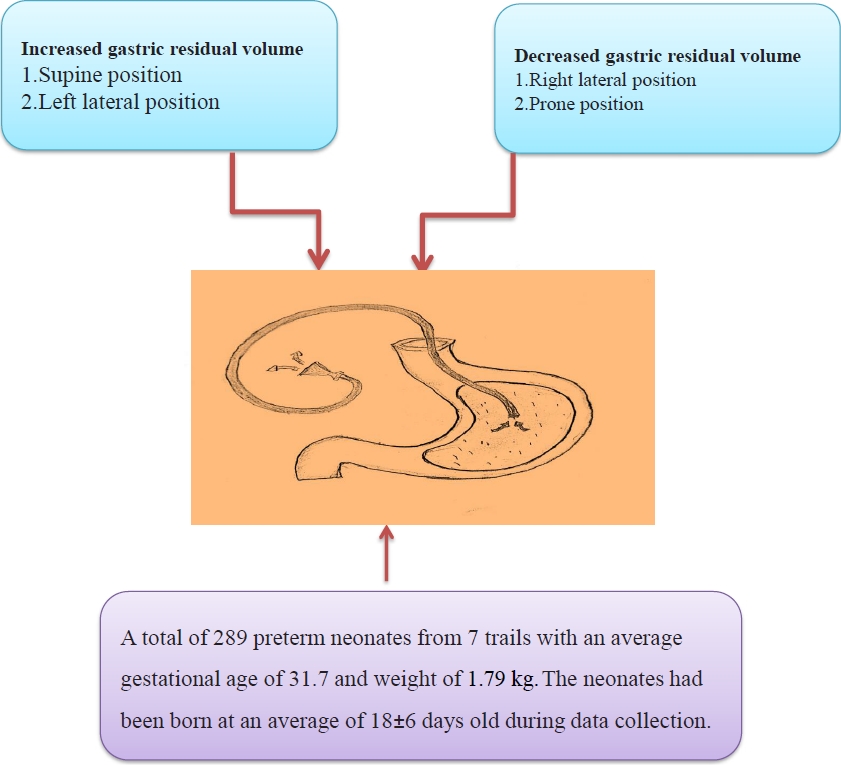
Breastfeeding and it's tolerance are the positive indicators for preterm babies. Placing the preterm infant in the right lateral or prone position after feed had lesser gastric residual volume compared to placing them in left lateral or supine positions. The post-feed position is a vital element in enhancing feeding tolerance, mechanical functions of the gastrointestinal tract and the overall development of preterm infants.
- Review Article
- Gastroenterology
- Value of transabdominal ultrasonography for diagnosing functional constipation in children: a systematic review and meta-analysis (6,145 times)
- Duc Long Tran, Phu Nguyen Trong Tran, Paweena Susantitaphong, Phichayut Phinyo, Palittiya Sintusek
- Clin Exp Pediatr. 2025;68(2):127-135. Published online November 13, 2024
-

Transabdominal ultrasonography is increasingly used as a novel modality for detecting pediatric functional constipation (FC). This systematic review and metaanalysis aimed to assess the diagnostic parameters of FC including rectal diameter (RD) and anterior rectal wall thickness. A systematic search was conducted of the Ovid MEDLINE, Embase, Scopus, and PubMed databases through September 29, 2023, to identify studies comparing RD...
- Allergy
- New approaches to immunotherapy in house dust mite allergy (6,096 times)
- In Sik Kim
- Clin Exp Pediatr. 2023;66(4):161-168. Published online October 25, 2022
-
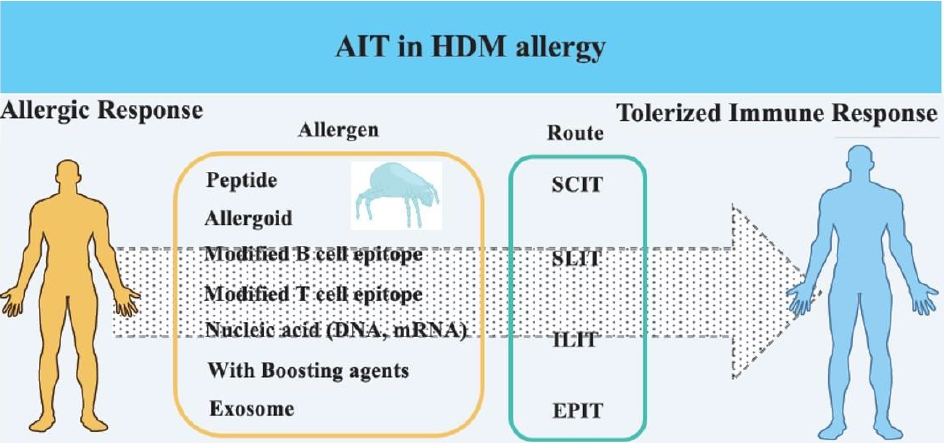
Allergen immunotherapy (AIT) has developed over the last few decades and has emerged as a promising treatment. House dust mite (HDM) is a target allergen in AIT, and various modified HDM allergens have been improved for their efficacy. Moreover, clinical trials have proved their significantly therapeutic effects in allergy. This article review focuses on HDM allergens developed for AIT efficacy,...
- Practical issues of oral immunotherapy for egg or milk allergy (6,011 times)
- Sukyung Kim, Kangmo Ahn, Jihyun Kim
- Clin Exp Pediatr. 2024;67(3):140-148. Published online June 19, 2023
-

· Oral immunotherapy should be supervised by pediatricians with experience administering oral food challenge tests and managing allergic reactions.
· Food allergen intake is gradually increased and maintained for years.
· Patients may experience allergic reactions and psychological problems.
· Adjunctive therapies (biologics, antihistamines, and leukotriene receptor antagonists) may improve efficacy and safety.
· Contraindications include uncontrolled asthma, malignancy, active autoimmune disorders, and beta-blocker usage.
- Original Article
- Gastroenterology
- Assessing indicators and clinical differences between functional and organic childhood constipation: a retrospective study in pediatric gastroenterology clinics (5,949 times)
- Hasan M. Isa, Fatema A. Alkharsi, Fatema A. Salman, Maryam S. Ali, Zahra K. Abdulnabibi, Afaf M. Mohamed
- Clin Exp Pediatr. 2023;66(7):296-306. Published online June 14, 2023
-
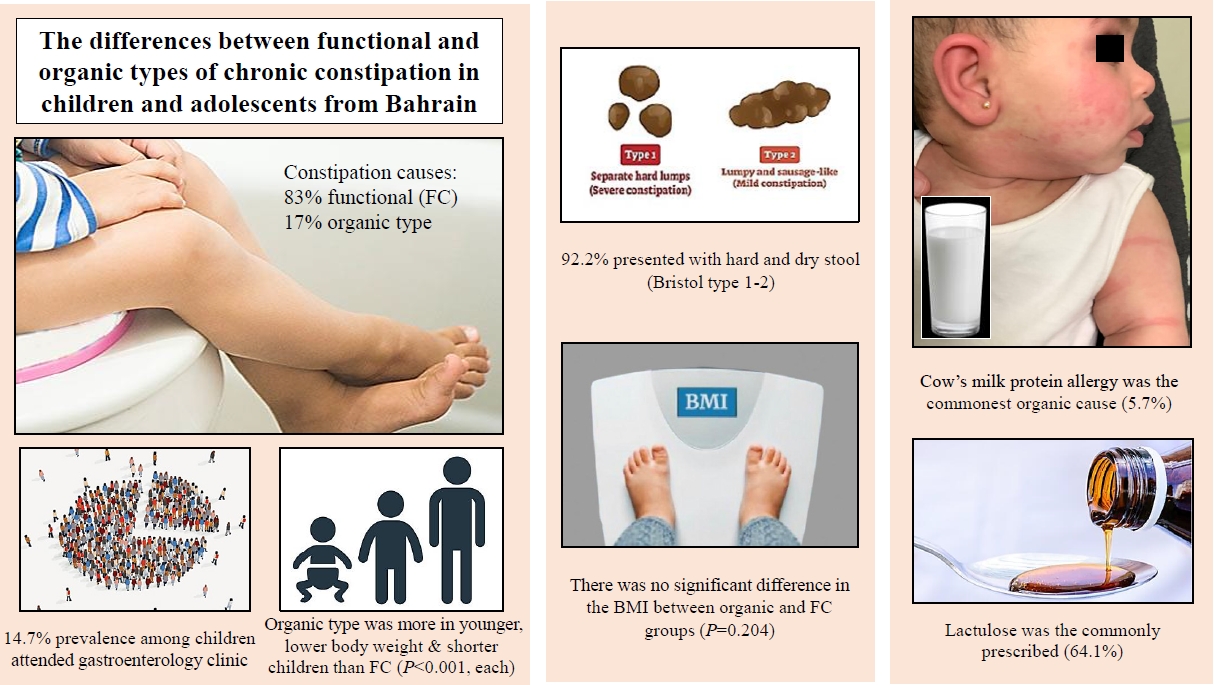
Question: What causes childhood constipation, and what can predict organic constipation?
Finding: Constipation represents 14.7% of gastroenterology visits. Functional constipation is more common among constipation types, while organic constipation is more common in young children and those with a low body weight, stunted growth, mucus in the stool, and associated diseases.
Meaning: Younger children and those with lower growth or mucus in the stool should be assessed for underlying organic causes of constipation.
- Review Article
- Allergy
- Eosinophil-derived neurotoxin levels can predict allergic disease development and atopic march in children (5,882 times)
- Zak Callaway, Chang-Keun Kim
- Clin Exp Pediatr. 2025;68(6):398-405. Published online February 3, 2025
-

· Allergic march occurs in a subset of children, beginning with atopic dermatitis and progressing to food allergies, allergic rhinitis, and/or asthma. Its early diagnosis is important to slowing its progression.
· Eosinophil-derived neurotoxin (EDN), an excellent biomarker of eosinophil activity, is often elevated in allergic diseases.
· EDN levels have been used to predict allergic disease development and diagnose, treat, and monitor allergic diseases.
- Original Article
- Pulmonology
- Clinical course of children with postinfectious bronchiolitis obliterans with versus without comorbid bronchopulmonary dysplasia (5,868 times)
- Lamia Medghoul, Julien Grosjean, Christophe Marguet, Hortense Petat
- Clin Exp Pediatr. 2025;68(7):497-502. Published online April 1, 2025
-

Question: Postinfectious bronchiolitis obliterans (PIBO) is a chronic respiratory disease that typically develops in children after a severe respiratory infection. Bronchopulmonary dysplasia (BPD) is often comorbid in patients with PIBO.
Finding: Corticosteroid pulse therapy effectively manages PIBO with or without comorbid BPD, significantly reducing exacerbations and decreasing the daily requirement for inhaled corticosteroids.
Meaning: Therapeutic effects of corticosteroid pulses are rapid and sustained over time, in both groups.
- Review Article
- General Pediatrics
- Metabolic complications of obesity in children and adolescents (5,756 times)
- Hyunjin Park, Jung Eun Choi, Seunghee Jun, Hyelim Lee, Hae Soon Kim, Hye Ah Lee, Hyesook Park
- Clin Exp Pediatr. 2024;67(7):347-355. Published online November 16, 2023
-

· Pediatric obesity increases the risk of metabolic complications (insulin resistance, dyslipidemia, nonalcoholic fatty liver disease) and long-term cardiovascular diseases.
· A new obesity definition and various indicators (continuous metabolic syndrome score, pediatric simple metabolic syndrome score, fatty liver index) have been proposed to evaluate children’s susceptibility to metabolic disorders.
· Laboratory and body composition tests in pediatric screenings can identify groups at high risk of metabolic complications of obesity.
- Original Article
- General Pediatrics
- Nonpharmacological interventions for managing postoperative pain and anxiety in children: a randomized controlled trial (5,702 times)
- Edlin Glane Mathias, Mamatha Shivananda Pai, Vijay Kumar, Dinesh Narayanakurup, Malavika Kulkarni, Vasudeva Guddattu, Ann-Cathrine Bramhagen, Baby S Nayak, Anice George
- Clin Exp Pediatr. 2024;67(12):677-685. Published online October 31, 2024
-

Question: What is the effect of nonpharmacological interventions on postoperative pain and anxiety among children.
Finding: Nurse-provided distraction interventions reduce pain and anxiety among pediatric surgical patients.
Meaning: The findings suggest that nonpharmacological interventions provided postoperatively to children reduce their pain and anxiety levels.
- Other
- Virtual, augmented, and mixed reality: potential clinical and training applications in pediatrics (5,676 times)
- Suyoung Yoo, Meong Hi Son
- Clin Exp Pediatr. 2024;67(2):92-103. Published online May 24, 2023
-

· Review of articles that investigated the applications of virtual, augmented, or mixed reality in pediatric clinical settings and in the training of pediatric medical professionals was conducted.
· A total of 89 studies were retrieved, with 36 randomized controlled trials.
· In most studies, intervention using the novel technology was at least as effective or more effective than the traditional method.
· Use of virtual, augmented, and mixed reality has potential in pediatrics.
- Infection
- Enteric pathogens implicated in acute infectious diarrhea among young children in resource-limited region with rapidly growing population: a hospital-based cross-sectional study (5,655 times)
- Aseel Mahmood Ibrahim Al-Mashahedah, Randa Mohammed Dhahi
- Clin Exp Pediatr. 2025;68(5):379-387. Published online December 23, 2024
-

Question: What are the most common enteric pathogens in acute diarrhea among children younger than 5 years of age, and which age group is most susceptible?
Finding: Bacteria were the most common causative microorganisms of diarrhea, followed by viruses, parasites, and fungi. The 1–2-year age group was the most commonly affected.
Meaning: There is a need to formulate preventive strategies targeting children exposed to enteric pathogens to limit diarrhea.
- Review Article
- Neurology
- Electroencephalography source localization (5,642 times)
- Tae-Hoon Eom
- Clin Exp Pediatr. 2023;66(5):201-209. Published online December 29, 2022
-

· Electroencephalography (EEG) directly images the electrical activity of neurons at a higher temporal resolution than other neuroimaging techniques.
· EEG is still widely used in brain function research due to its advantages.
· Forward and inverse problems of EEG analyses require solutions.
· Methods such as the dipole and distributed source models have been introduced.
· Applications of EEG are expanding with the integration of other technologies and large-scale data.
- Letter to the Editor
- Endocrinology
- Accuracy of predicted adult height using the Greulich-Pyle method and artificial intelligence medical device (5,621 times)
- Dongho Cho, Yun Sun Choi, Hayun Oh, Young min Ahn, Ji-Young Seo
- Clin Exp Pediatr. 2023;66(3):145-147. Published online January 25, 2023
-
- Hematology
- Neutropenia following metamizole use in pediatric patients: a multicenter retrospective study (5,501 times)
- Meraj Alam Siddiqui, Arzu Akyay, Fatma Burcu Belen Apak, Özgür Carti, Canan Albayrak, Melek İşik, Zühre Kaya, Sevgi Yetgin, Lale Olcay
- Clin Exp Pediatr. 2024;67(8):415-417. Published online July 23, 2024
-

- Review Article
- General Pediatrics
- Korean Developmental Screening Test for Infants and Children (K-DST): development, applications, and implications for future early childhood development interventions (5,497 times)
- Dooyoung Kim, Young June Choe, Bilal Aurang Zeb Durrani, EunYoung Kim, Junghye Byeon, Baik-Lin Eun
- Clin Exp Pediatr. 2023;66(7):288-293. Published online December 22, 2022
-

· This review discusses the development and application of the Korean Developmental Screening Test for Infants and Children (K-DST) for ensuring early childhood development.
· Various studies have demonstrated the integral role of the K-DST in facilitating the detection of developmental delays and delivery of timely interventions.
· The tailoring of the K-DST to Korean infants and children suggests that other countries may further translate and adapt it.
- Original Article
- Neonatology (Perinatology)
- Differential roles of interleukin-6 and adrenomedullin in early diagnosis and mortality predictions in late-onset neonatal sepsis (5,482 times)
- Emilly Henrique dos Santos, Gabriel Acca Barreira, Mariana Okay Saippa, Maria Carolina Pires Cruz, Karen Alessandra Rodrigues, Ronaldo Arkader, Thelma Suely Okay
- Clin Exp Pediatr. 2025;68(6):463-471. Published online December 23, 2024
-

Question: Can adrenomedullin (ADM) or interleukin-6 (IL-6) detect late-onset neonatal sepsis (LOS) at admission (area under the curve [AUC]>0.90) as an early diagnostic marker?
Finding: Only IL-6 consistently distinguished survivors from nonsurvivors (AUC>0.90) on admission and antibiotic treatment days 3 and 7. C-reactive protein level identified infections from day 3 but failed to predict outcomes (AUC<0.70).
Meaning: IL-6 level can improve LOS diagnosis and prognosis.
- Nutrition
- Differential effects of dietary and physical activity interventions on adiposity of children with obesity (5,348 times)
- Anekchoke Tangtongsoong, Chonnikant Visuthranukul, Yuda Chongpison, Sirinuch Chomtho
- Clin Exp Pediatr. 2025;68(5):370-378. Published online February 3, 2025
-

Question: How do dietary intake and physical activity affect body mass index (BMI) z scores and adiposity among children with obesity?
Finding: Higher dietary protein and fiber intakes were significantly associated with a decrease in BMI z scores and adiposity among children with obesity.
Meaning: Optimizing dietary interventions by focusing on protein and fiber intakes could be an effective strategy for managing childhood obesity.
- Review Article
- Neonatology (Perinatology)
- Influence of infant microbiome on health and development (5,315 times)
- Noelle Younge
- Clin Exp Pediatr. 2024;67(5):224-231. Published online August 21, 2023
-
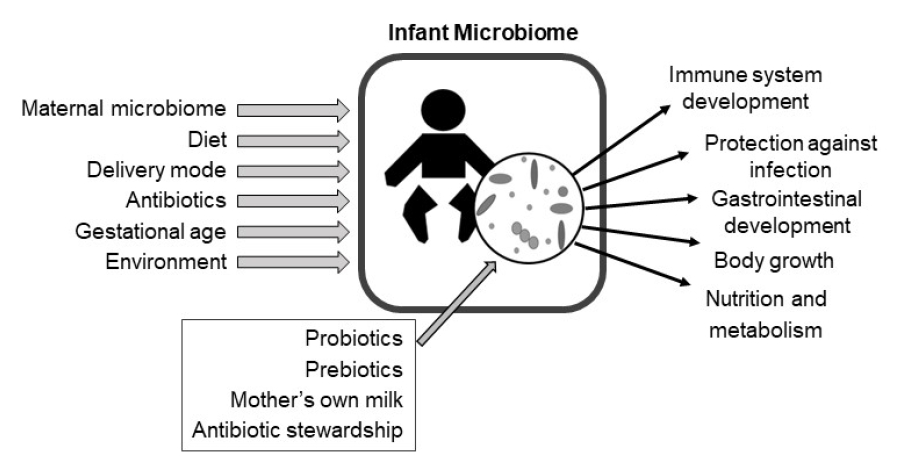
· The infant gut microbiome is highly dynamic and individualized.
· Microbes are vertically transmitted from mother to infant during delivery and throughout infancy.
· Delivery mode, gestational age, diet, and antibiotic use influence infant microbiome composition and function.
· In animal studies, the microbiome played critical roles in the structural and functional development of the infant gastrointestinal and immune systems.
· Microbiome-targeted therapies have great potential to reduce infant morbidity and mortality.
- Original Article
- Nutrition
- Not breastfeeding and risk of autism spectrum disorders among children: a meta-analysis (5,314 times)
- Ensiyeh Jenabi, Saeid Bashirian, Amir Mohammad Salehi, Salman Khazaei
- Clin Exp Pediatr. 2023;66(1):28-31. Published online July 19, 2022
-
This study aimed to determine whether there is an association between not breastfeeding (versus breastfeeding) and the risk of autism spectrum disorders (ASD) among children. We found that the risk of ASD associated with not breastfeeding had an odds ratio of 1.81 (95% confidence interval, 1.35–2.27; I2=0 %). These findings suggest the importance of breastfeeding in decreasing the risk of ASD among children.
- Critical Care Medicine
- Timing of parenteral nutrition initiation in critically ill children: a randomized clinical trial (5,225 times)
- Nagwan Y. Saleh, Hesham M. Aboelghar, Nehad B. Abdelaty, Mohamed I. Garib, Asmaa A. Mahmoud
- Clin Exp Pediatr. 2023;66(9):403-411. Published online June 14, 2023
-

Question: What is the ideal initiation timing of parenteral nutrition for critically ill children?
Finding: This randomized clinical trial of 140 children examined the effects of an early or late start of parenteral nutrition on mechanical ventilation need (primary outcome) and length of stay and mortality (secondary outcomes).
Meaning: Children who received early versus late parenteral nutrition had lower mechanical ventilation need and duration.
- General Pediatrics
- The role of serum zinc and selenium levels in etiology of febrile seizures (5,187 times)
- Yavuz Ataş, Hatice Gamze Poyrazoğlu
- Clin Exp Pediatr. 2025;68(5):388-394. Published online January 13, 2025
-

Zinc may play a key role in preventing febrile seizures by increasing the seizure threshold and reducing oxidative stress. Incorporating zinc supplements into treatment could help protect children from the adverse effects of febrile seizures and improve their overall outcomes.
- Review Article
- Nephrology (Genitourinary)
- X-linked hypophosphatemic rickets: from diagnosis to management (5,174 times)
- Eujin Park, Hee Gyung Kang
- Clin Exp Pediatr. 2024;67(1):17-25. Published online June 14, 2023
-
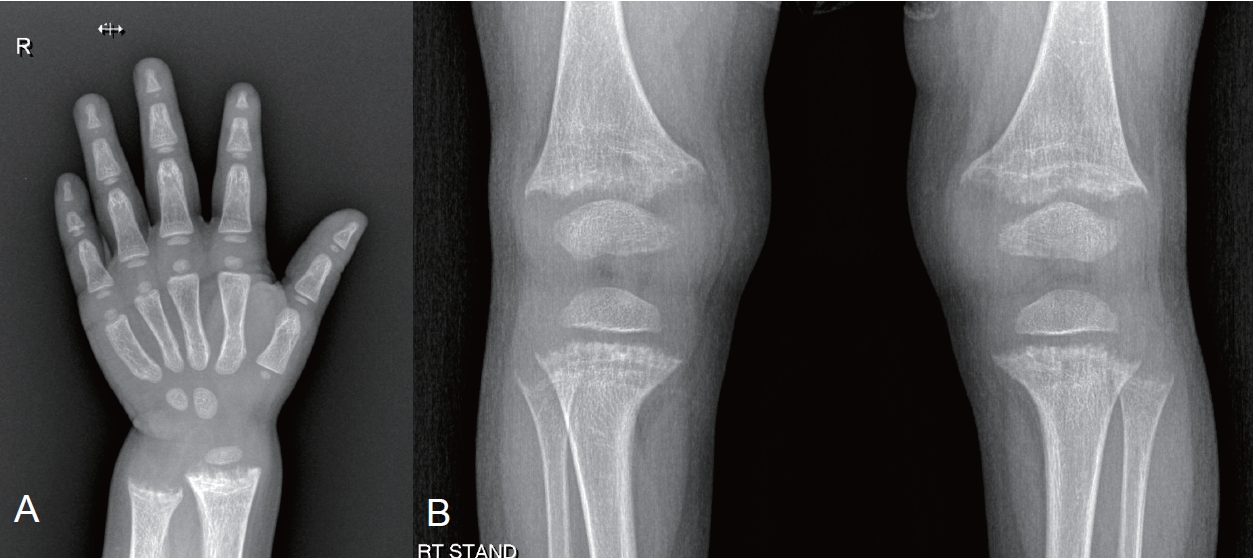
· X-linked hypophosphatemia (XLH), the most common cause of hypophosphatemic rickets, affects 1/20,000 people.
· XLH is caused by a loss-of-function mutation of the PHEX gene.
· Its main pathogenesis is elevated fibroblast growth factor-23 (FGF23) level.
· Burosumab, an FGF23 inhibitor, was developed in the early 2000s.
· Burosumab was approved in Korea in 2020 for XLH patients aged 1+ years with radiographic evidence of bone disease.
- Nutrition
- Protein substitutions as new-generation pharmanutrition approach to managing phenylketonuria (5,172 times)
- Fatma Nur Keskin, Teslime Özge Şahin, Raffaele Capasso, Duygu Ağagündüz
- Clin Exp Pediatr. 2023;66(8):320-331. Published online November 1, 2022
-

Phenylketonuria, an autosomal recessive disease that results from the inability to metabolize phenylalanine, is currently treated with medical nutrition therapy. New treatment approaches such as tetrahydrobiopterin, glycomacropeptide, large neutral amino acids, pegvaliase, and gene therapy significantly impact disease management and dietary enrichment. This article also reviews animal and human studies that have evaluated the efficacy and safety of these new protein substitutes.
- Editorial
- Neonatology (Perinatology)
- Intermittent sigh breaths during high-frequency oscillatory ventilation among newborn infants (5,153 times)
- Ga Won Jeon
- Clin Exp Pediatr. 2025;68(7):486-488. Published online April 16, 2025
-

Intermittent sigh breaths during high-frequency oscillatory ventilation can improve ventilation and oxygenation by enhancing lung recruitment. Although research on this approach in newborn infants is limited, some published studies suggest that sigh breaths are generally applied at a rate of 2–3 breaths/min with an inspiratory time of 0.5–1 second and pressure of current mean airway pressure + 5 cmH2O (maximum, 30 cmH2O).
- Original Article
- Allergy
- Association between dyslipidemia and asthma in children: a systematic review and multicenter cohort study using a common data model (5,088 times)
- Ji Eun Lim, Hye Min Kim, Ju Hee Kim, Hey Sung Baek, Man Yong Han
- Clin Exp Pediatr. 2023;66(8):357-365. Published online June 14, 2023
-

Question: Is dyslipidemia a risk factor for asthma in children?
Finding: This was a comprehensive systematic review and retrospective multicenter study of the association between dyslipidemia and asthma in children. In a multicenter cohort analysis using the Observational Medical Outcomes Partnership Common Data Model, elevated total cholesterol levels were associated with increased risk of asthma development.
Meaning: These findings suggest an association between dyslipidemia and asthma in children.
- Gastroenterology
- Risk factors of prolonged diarrhea in children under 2 years old (4,974 times)
- Dedy Rahmat, Agus Firmansyah, Ina S. Timan, Saptawati Bardosono, Joedo Prihartono, Pramita Gayatri
- Clin Exp Pediatr. 2023;66(12):538-544. Published online November 16, 2023
-
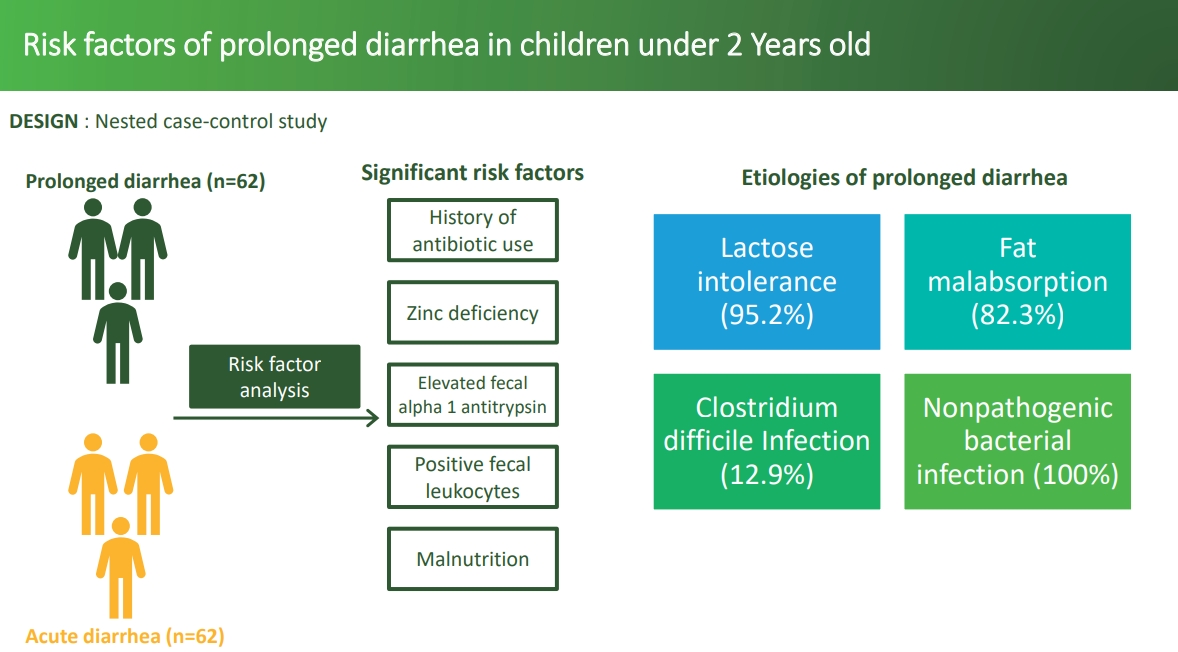
Question: What are the risk factors for prolonged diarrhea in children under 2 years old?
Finding: History of antibiotic use, zinc deficiency, and elevated fecal alpha-1 antitrypsin levels were the main risk factors of prolonged diarrhea in children under 2 years old with acute diarrhea.
Meaning: Rational antibiotic usage is necessary as well as thorough testing of serum zinc level and fecal alpha-1 antitrypsin levels.
-

-
-
6.02024CiteScore98th percentilePowered by
-
Impact Factor3.6
-
- TOPICS
- ARTICLE CATEGORY
- Editorial Office
-
Korean Pediatric Society
#1606 Seocho World Officetel, 19 Seoun-ro, Seocho-ku, Seoul 06732, Korea
Tel: +82-2-3473-7306 Fax: +82-2-3473-7307 E-mail: office@e-cep.org
Clinical and Experimental Pediatrics is an open access journal. All articles are distributed under the terms of the Creative Commons Attribution NonCommercial License (http://creativecommons.org/licenses/by-nc/4.0/)
Copyright © 2025 by Korean Pediatric Society.











